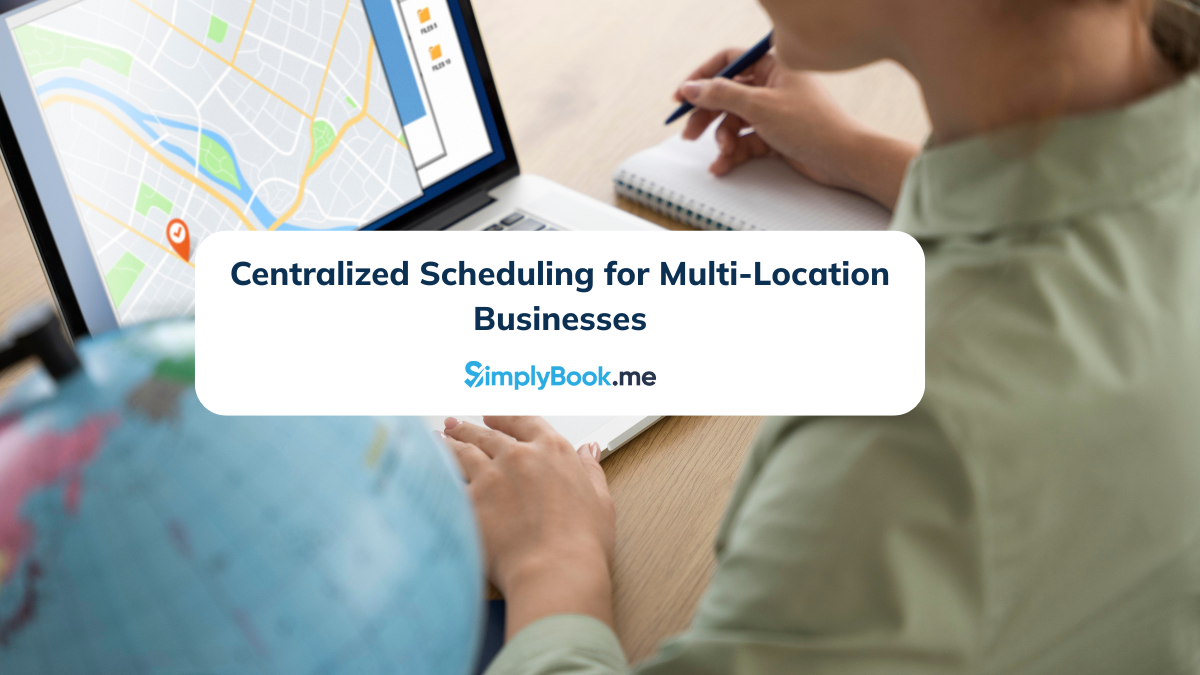Customer Experience Benchmarking: Identifying Areas for Improvement

This post is also available in:
![]()
![]()
![]()
![]()
Customer experience (CX) benchmarking is a handy way for businesses to improve their customer satisfaction and overall performance.
Understanding how well your company is delivering in comparison to industry standards is crucial for staying ahead in a competitive market
So, let’s discover how companies can use customer experience benchmarking to improve their customer’s journey.
What is customer experience benchmarking?
Customer experience benchmarking is the process of measuring your company’s customer service performance against industry standards or direct competitors.
By scouting out your competitors and seeing what they’re up to, you can ensure that the service you’re offering your customers is of the same standard (or, ideally, higher).
Essentially, it involves evaluating the quality of interactions and experiences customers have with your brand, such as online or over the phone with your customer service team. Then you can identify key areas where your performance lags behind others.
By looking at how your customer experience compares to that of the market, you can create more customer-centered strategies and make sure that your business is delivering a consistent omnichannel service.
Important components of customer experience benchmarking
There are several key components that allow you to get a clear overview of where your customer experience stands. Those components are:
Data collection
One of the most important components of customer experience benchmarking is to gather data from your customers. Collecting feedback from customers about their interactions with your company is vital as it tells you exactly what they think about your business from a customer perspective.
You can use customer reviews, surveys, and direct feedback to help you understand how customers perceive your brand.
Competitor analysis
Here, you’ll compare your performance against your competitors’ performance. You can do this by reviewing their customer feedback, public reviews, and industry rankings. This helps you identify where competitors are excelling and where you might need to catch up.
Defining metrics
Identify and track key metrics that are critical for measuring CX performance. This includes Net Promoter Score (NPS), Customer Satisfaction (CSAT), and Customer Effort Score (CES).
Benchmarking against industry standards
Use industry reports and case studies to measure your performance against recognized standards. This can provide a broader view of how your business is performing compared to the rest of the industry.
How do companies measure customer experience?
There are a few ways that companies can measure customer experience, such as:
Surveys and feedback tools
Surveys and feedback tools allow businesses to ask customers directly about their experience. To gather this information, you can ask customers to fill out a quick survey when they complete their purchase at the checkout or send marketing emails containing a survey link. You can offer incentives, such as discounts, if the customer completes a survey.
Customer support metrics
Another way to measure company experience is to track the performance of your customer service team through metrics. This can include looking at the first response time, resolution time, and the number of issues resolved on the first contact.
Social media
By monitoring social media comments and direct messages from the likes of Instagram and TikTok, companies can gather unfiltered feedback from customers and get a sense of public sentiment about their brand.
Analytics tools
Website and app analytics tools can track how customers are interacting with your digital platforms, helping you identify bottlenecks or areas of frustration on the customer’s end.
What is the best customer experience metric?
There are several metrics used to measure customer experience, but the most widely used is Net Promoter Score (NPS), as it’s often considered to be the best.
NPS works by asking this simple question: “How likely are you to recommend our product/service to a friend or colleague on a scale of 0 to 10?”.
In fact, it’s likely you’ll be familiar with the smiley faces on the scorecard used to rank your experience of shopping with a business.
As you can see above, the score is based on responses that are categorized into three groups: Promoters, Passives, and Detractors.
NPS is widely used because it directly correlates with customer loyalty and the likelihood of repeat business. It also allows businesses to categorize their customer base and focus on turning detractors into promoters, which can significantly improve overall customer satisfaction.
There are two more commonly used metrics, which are Customer Satisfaction Score (CSAT) and Customer Effort Score (CES).
Customer Satisfaction Score (CSAT) is a simple and direct way of measuring customer happiness after an interaction. It captures immediate feedback, typically by asking customers to rate their satisfaction on a scale (often 1 to 5 or 1 to 10) after they’ve interacted with your company.
Then there’s the Customer Effort Score (CES). Unlike CSAT, which measures satisfaction, CES focuses on the effort customers need to put into getting an issue resolved or completing a task, like making a purchase or getting customer support.
After an interaction, customers are asked questions such as “How easy was it to resolve your issue?” or “How much effort did you personally have to put forth to have your request handled?”.
The score is usually rated on a scale of 1-5 or 1-7, with lower scores indicating a lower level of effort.
What are the benefits of customer experience benchmarking?
Customer experience benchmarking offers some key benefits for businesses, which include:
Identifying weaknesses
Benchmarking allows you to spot weaknesses and areas where your company is underperforming compared to competitors or industry standards. You can use this information to take targeted action to improve your processes.
Improving customer satisfaction
One of the main reasons for engaging in customer experience benchmarking is to improve the experience for your customers. By focusing on areas that matter most to customers, you can create a more seamless and enjoyable customer experience that leads to higher satisfaction rates.
Increasing customer loyalty
Customer experience benchmarking allows you to build stronger relationships with customers, encouraging them to trust you more as a brand.
This can lead to increased loyalty and repeat business. It may even mean they’re more likely to recommend you to their friends, which can help with finding more potential customers. Prospecting tools can also help you find those leads.
Better decision-making
Benchmarking provides data-driven insights, allowing business leaders to make informed decisions about where to invest resources for maximum CX impact.
Competitive advantage
Staying ahead of competitors in terms of customer experience can be crucial, helping your company attract and retain more customers compared to your peers.
Key challenges in customer experience benchmarking
Although there are a plethora of benefits to customer experience benchmarking, it’s not without its challenges, such as:
- Data collection: It can be tricky to gather accurate and sufficient customer data to compare against your industry.
- Benchmark relevance: You have to make sure that the benchmarks used are relevant to your specific business context, as industry standards may not always align with your company’s goals.
- Interpreting metrics: Understanding how to make sense of the data and translating it into actionable steps for improvement is vital.
How to improve the customer experience
Improving the customer experience is an ever-changing process. Here are some steps you can take to get you on the right track utilizing your benchmarking research:
1. Listen to customer feedback
Customer feedback is one of the most valuable resources for improving the customer experience. Now you’ve gathered customer experience benchmarking data both internally and externally, it’s time to put that to use.
Whether you’ve collected buyer intent data from social media, reviews, or surveys, this invaluable information can now propel you forward in your customer experience services.
Using feedback to address customer concerns, improve product features, or refine services can result in immediate improvements in the customer journey.
2. Invest in employee training
Alongside your benchmarking research, you should be training your employees to engage with customers thoughtfully and effectively. Your employees are the direct link between your business and your customers.
To ensure they can provide a superior experience, you have to invest in comprehensive employee training and development. Your customer feedback is important here, as your customers may have specified areas where you can improve, such as call center wait times or product knowledge.
3. Streamline the customer journey
It can be said that a seamless customer journey is key to ensuring a positive experience. Customers want their interactions with your business to be as smooth and hassle-free as possible.
Actions like making a purchase, submitting a query, or requesting support should be achievable in as few steps as possible.
You should also provide customers with a range of channels to interact with your business, including phone support, email, live chat, social media, and self-service options like FAQs or a knowledge base. Customers want to know that you’re easily contactable should they require any assistance.
4. Reward loyal customers
Something that might have cropped up in your customer experience benchmarking is how your competitors reward their customers. If they have a loyalty card that customers can use to earn points, they’re more likely to earn their custom if you’re not also offering something similar.
Recognizing and rewarding your loyal customers can strengthen their relationship with your brand. So, if you don’t do this already, set up a loyalty scheme.
This could be a loyalty card, email points reward system, or personalized discounts. This shows appreciation and can encourage repeat business.
Use benchmarking for continuous improvement
It’s clear to see that customer experience benchmarking is a powerful tool that allows businesses to improve their service. Companies can benefit from learning from both their own performance and that of their competitors. This means they can continuously work on the service they’re providing their customers, making it better by the day.


Comments
0 commentsNo comments yet